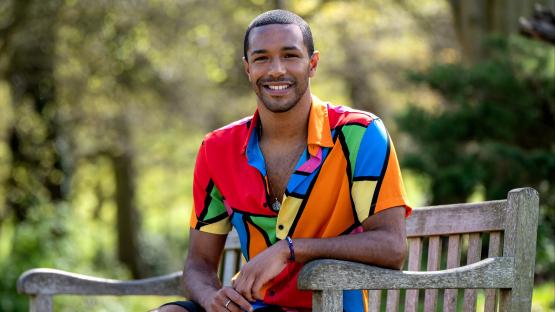Ian Bramble isn't afraid to admit it. On April 4 he tweeted: “I have been treating COVID a little less seriously lately.”
In the beginning, the 45-year-old Edmonton-area pastor was doing the opposite. He sanitized all his groceries. He and his wife changed their clothes every time they went inside. For months, with his two churches closed, he rarely left the house.
As spring turned to summer, he started to let down his guard. First, he noticed his hand-washing had slipped. Then, increasingly, he opted more for in-store than online shopping.
“I've definitely been into more homes than I think the government wants me to over the last little while,” he said with a laugh.
Read more: Canadians are feeling pandemic fatigue. Experts say ‘greater good' message isn't enough
The longer the pandemic has gone on, the more Canadians struggle to adhere to the guidelines and comply with local, provincial and federal restrictions. Even with the pandemic far from over, experts say fatigue and frustration have set in for many, and it's manifesting in different ways.
By the fall, the idea of travelling was no longer daunting for Bramble. He had family and friends in Ontario he hadn't seen in months. He missed them. They missed him. So he went.
But Ontario had just freshly shut down again. Indoor dining and gyms were closed. The message then — and now — was clear: stay home except for essential reasons.
“I figured we'll take precautions, but try and live our lives and see how things can work,” he said.
“I think, in some ways, that's still my mindset.”
Risk perceptions
The COVID-19 pandemic has so far claimed over 23,000 Canadians' lives. It's been more than a year since the virus first took hold and it's still tightening its grasp. Just Wednesday, Canada's seven-day average of new infections reached a dangerously high point, with more than 8,200 new cases daily.
Despite the worsening situation, reinvigorating public vigilance has shown itself to be a growing challenge as the crisis continues. A poll conducted in November showed nearly half of all Canadians feel fed up with pandemic measures.
When it comes to behaviour, people are more likely to believe something is dangerous — and tailor their actions to it — when they can picture it, said Gretchen Chapman, a psychologist and decision researcher at Carnegie Mellon University.
Read more: COVID-19 pandemic exhaustion could drive some to gather for Easter despite warnings
If the impacts aren't close to home, it creates a mental distance, she said. It doesn't sink in.
“We have trouble forming risk perceptions based on data sets,” Chapman said. “As long as my experience is telling me certain things are safe because bad things aren't happening, I don't have the perception the pandemic is really risky.”
She continued: “Someone could draw the conclusion that they have no control, no prediction over it. Even if I do everything right, I could still get it. So this one-to-one correspondence between ‘do the right thing, stay healthy,' and ‘do the wrong thing, get sick' — that's not happening in our experience.”
Canada has seen its fair share of social gatherings and that has fuelled the virus surge. In July, public health figures nationwide pointed to small social gatherings as the reason behind case spikes in Ontario, Quebec, Alberta and British Columbia. In November, with many provinces locked down again, public health experts offered blunt discouragements about holiday planning.
It happened anyway. Gatherings around December led to a later spike in cases in some provinces — mainly Ontario — though it tapered off quicker than expected as winter and tightened restrictions set in.
But there were moments when the lack of “one-to-one correspondence,” as Chapman described, may have tripped up perceptions.
When thousands of people piled into Toronto's Trinity Bellwoods Park in May, flouting physical distancing regulations, politicians and public health experts alike worried about its consequences. While it's hard to know for sure, officials later said there was “no evidence” of increased COVID-19 cases linked to the park romp.
“The risk is on a continuum,” Capland said. “Emotions tend to be what drives our behaviours.”
“The decline of emotion, or fear, can mean we're not constantly assessing what behaviours I could be doing to protect myself, because we don't feel afraid anymore.”
'Lax behaviour'
For some, risk assessment has become increasingly individualized.
One Toronto-based father, who asked to remain anonymous out of fear of scrutiny from his employer, said he's taken “some liberties vis-Ã -vis the rules, but responsibly and within reason,” though it's not always perfect.
Last summer, he went to a dinner party indoors with friends. There were chefs and servers and the party was “probably under the max limit of people, whatever it happened to be at the time,” he said.
“We didn't see anyone for the first couple of months. That went out the window in the summertime and has continued since then,” he said.
“Risk now is very much assessed based on who we might hang out with. Are they reasonably cautious and responsible people? Do we believe their own circles are small?”
Read more: A look inside Canada’s hospitals as COVID-19 variants surge
Caplan said there's a distinction between risk preference and risk perception that might be at play here.
“When we pick our retirement fund portfolios, some of us are pretty risk-tolerant and we invest in risky stock growth funds and some of us are more risk-averse and pick lighter investments and you can't find what your risk tolerance is,” she said.
“In the beginning, we didn't really know our risk tolerance, so we followed the advice. … Now, people may be thinking, maybe their risk preference is not the same as my risk preference.”
The problem is, in a worsening pandemic rife with dangerous variants, “now's not the time to tolerate lax behaviour,” said Raywat Deonandan, an epidemiologist with the University of Ottawa.
“We have to consider after a year of this, that some people have been doing these things anyway and got away with it. Because you got away with it, you will likely do it again,” he said.
“But it's like Russian roulette. So far, you haven't gotten the full chamber but enough people spin, and someone's going to get shot.”
Fluctuating rules
Experts have long agreed that there are two levels to turning off COVID-19's tap — policy and individual. Governments should impose restrictions to discourage close contact and provide support to vulnerable communities and businesses bearing the brunt. They also have to trust that individuals will, collectively, make the right decisions to curb the virus's spread.
Jessica Jerome says it's hard to be mindful of COVID-19 safety protocols when the protocols are constantly changing.
Jerome, 33, an administrator for a real estate agency in Halton, Ont., never stopped going to the office. Despite having four kids between the ages of six and 19, she said she didn't qualify for the childcare benefit, which forced her to rely on friends and family to watch her kids when schools shut down. It made abiding by the rules hard from the get-go, she explained.
“When our government said not to mix with anyone outside of our household, I didn't have a choice,” she said. “There is no way bubbles can happen for me.”
Read more: Experts warned of new COVID-19 variants. Why did Ottawa wait for stricter travel rules?
Jerome said she found herself loosening up on shopping, “wandering around browsing because I'm bored at home,” and occasionally meeting up with a friend “to gain a few moments of normal.”
As Ontario's rules fluctuated over the summer and through the winter, she said it started to affect her and her children's mental health deeply.
“I actually take the rules with a grain of salt now, to be honest,” she said.
“If the rules made sense and were consistent, then I would be more inclined to listen. … I am just doing what works for me. I feel like I need to do what I need to do to keep my head above water.”
There's no question the absence of “perceived strong, consistent effective leadership” has played a role in this, Deonandan said. Without it, he said, people may “retreat” to their own personal resolutions.
The narrative that “if you restrict yourself from going to that party, you'll save grandma” is difficult for people to stomach these days, he said.
“They're sick of hearing about grandma.”
Variants and a third wave
So far, we've downloaded the pandemic onto individual responsibilities, Deonandan said.
What we need now is to “incentivize good behaviour” by providing things like sick leave — to ensure people stay home when they're ill — and appropriate guidance on how to go to the park and play contact sports, but safely. It's an important piece of the puzzle, he said, especially now as Canadians start to see the light at the end of the tunnel with vaccines.
“There's a reason why driving for a couple of hours is so exhausting. You can't maintain that vigilance, it's adrenal fatigue. That's what's happening here,” he said.
“But the insidiousness of this disease is that it's waited until we as a society are the least willing to do what we need to defeat it.”
Read more: Have COVID-19 variants pushed Canada into a third wave of the pandemic?
Canada is currently in the thick of a third wave. Virus variants are threatening to topple healthcare systems — more people are getting sick, and many are ending up sicker.
Bramble acknowledges his mindset has shifted recently. He said variants have renewed his fear.
He knows people who caught the disease. When a person at his church fell ill one day, Bramble brought them to a doctor. Their test came back positive and Bramble had to self-isolate.
But it was a Twitter thread, in fact, that ended up waking him the most.
A story about COVID in Ontario because I feel like a lot of the younger people in my network might benefit from reading this:
A few weeks ago, my sister (19) caught one of the variants.
1/12
— Natalia Mangos (@nataliamangos) April 4, 2021
In it, a woman described her sister's experience catching a variant — high fever, heart-rate, body aches and, later, cognitive impacts, like brain fog. He responded, saying it “scared me straight.”
“That story really spoke to me. I never thought this was a joke, but it's still serious,” he said.
“To be honest, it heightened my awareness more than that experience I had with my close contact.”
Read more: Will the more deadly COVID-19 variants ruin our summer? Here's what experts are saying
Bramble said he's taking more precautions than before but is still taking liberties when he sees fit. His two churches are back to operating, though at significantly smaller capacities.
“I thought things would change soon, I should be getting the vaccine soon. I thought things were turning a corner, but they're getting worse,” he said.
“I see my role in this but a lot more needs to be done, a lot more needs to change.”




